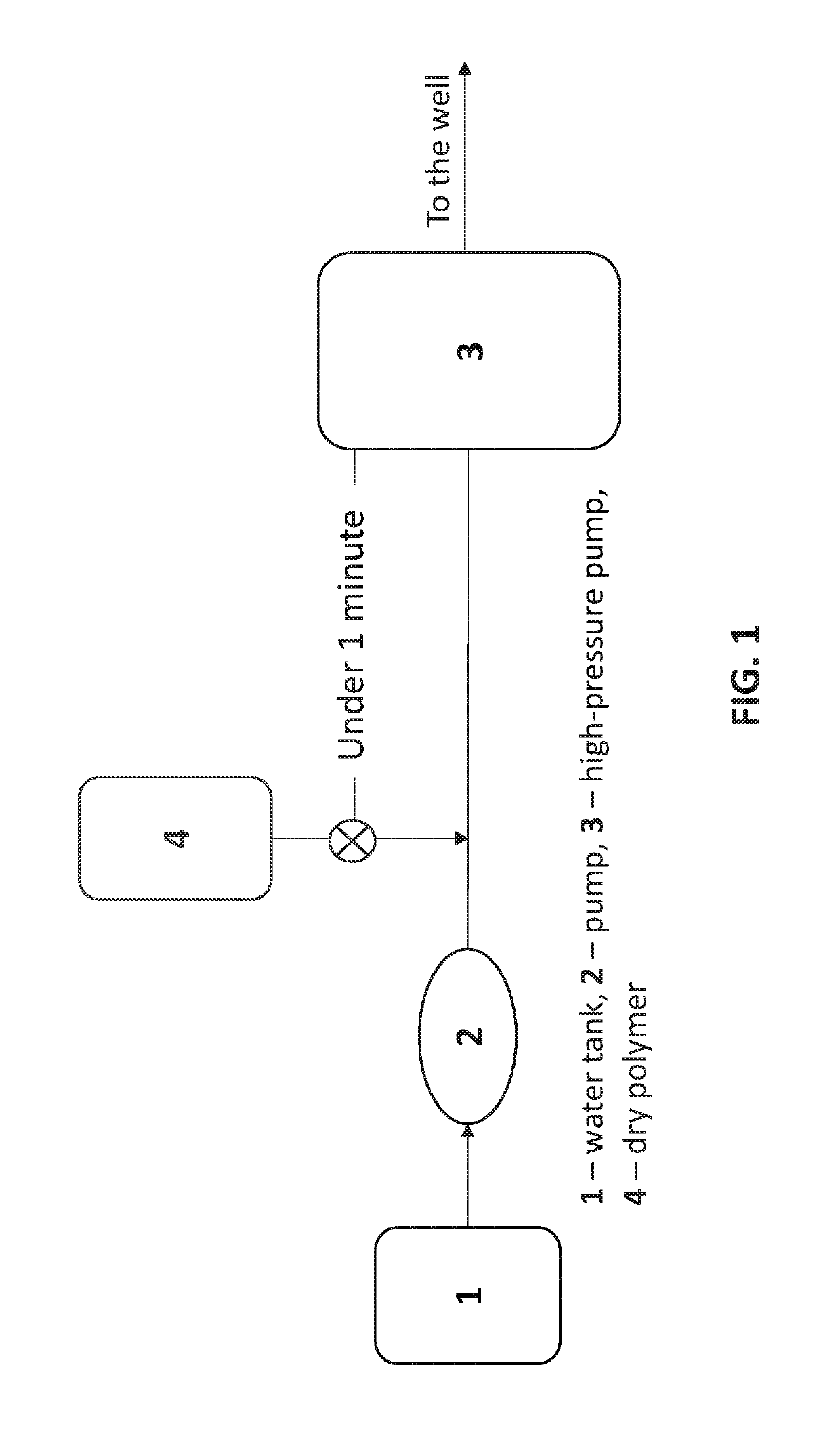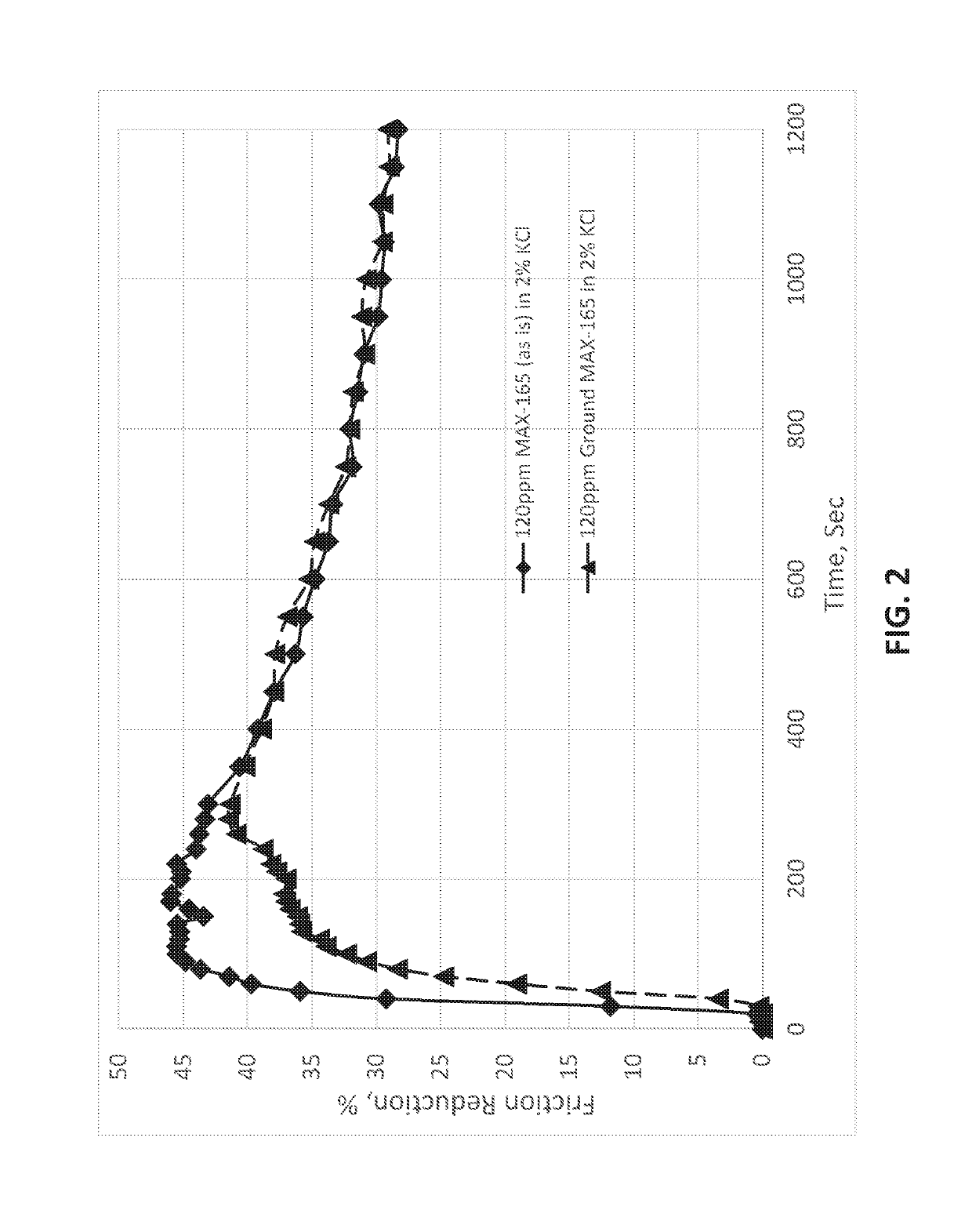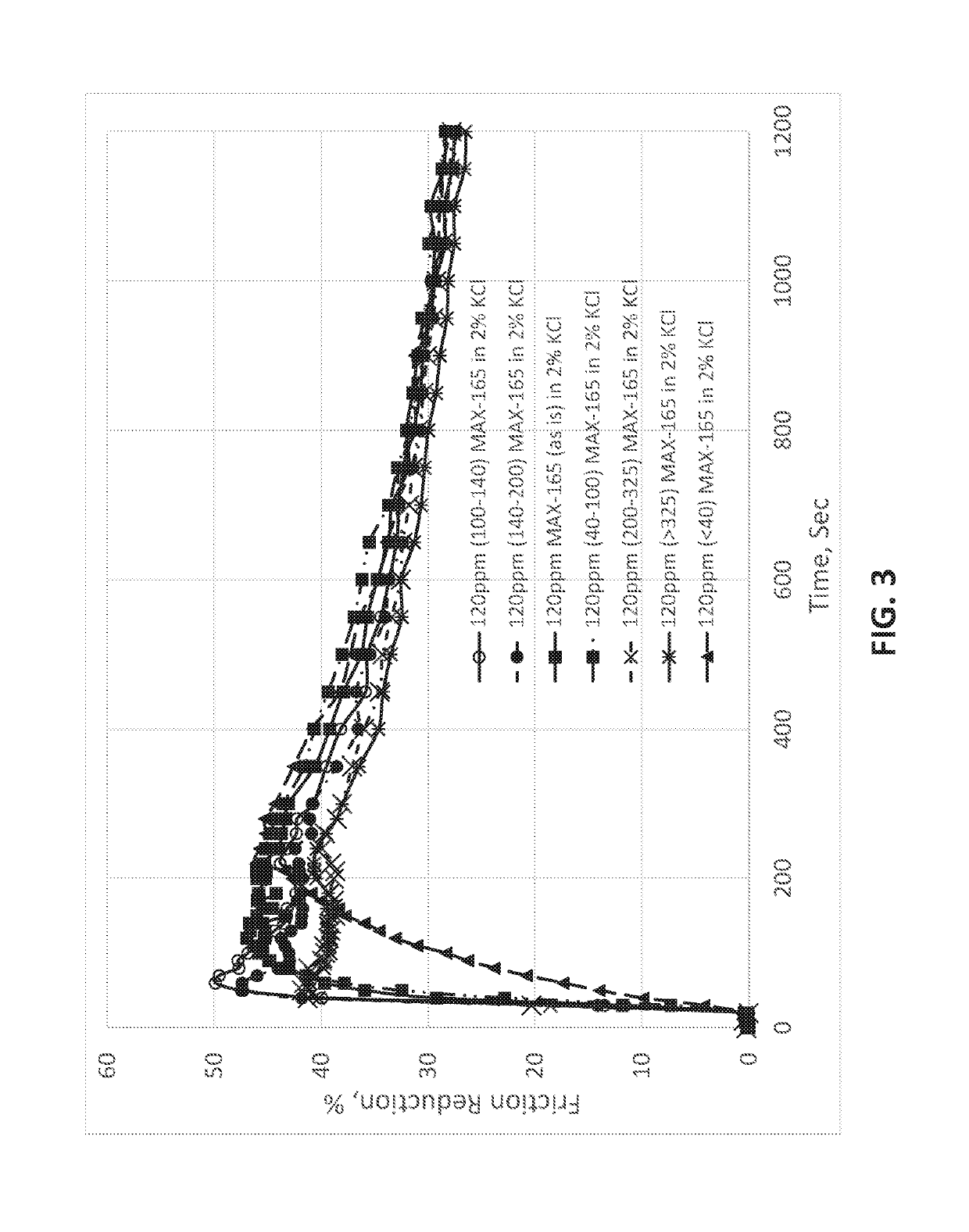Easily dispersible polymer powder for hydrocarbon extraction
a technology of hydrocarbon extraction and easy dispersibility, which is applied in the direction of drilling compositions, chemistry apparatuses and processes, etc., can solve the problems of shortening the hydration time, reducing the friction rate, and reducing the difficulty of use of solid powder polymers, so as to achieve fast hydration rate of polymer particles and sufficiently shorten the hydration time of polymer powders in water
- Summary
- Abstract
- Description
- Claims
- Application Information
AI Technical Summary
Benefits of technology
Problems solved by technology
Method used
Image
Examples
example 1
[0043]A commercial polyacrylamide-based dry polymer powder, MAX-165, offered by the Applicant ChemEOR, Inc. was used as the baseline. Particulars on the particle size distribution of the batch / lot of MAX-165 tested are as follows: Mesh 325 mesh=0.2%. Friction reduction performances of polymer powders with selected range of particle sizes were summarized as follows. All tests were conducted with 120 ppm active polymer in 2% KCl solution (to mimic a typical background level of salinity.)
[0044]
Range of ParticleSizeMax FRT_invFR20MAX 165 as is41.517029.13 46.1812027.61 40-100 mesh47.015528.24100-140 mesh49.92627.67140-200 mesh47.562127.41200-325 mesh41.941527.74>325 mesh41.511526.49
[0045]The dissolution and fisheyes testing results as summarized as follow:
[0046]
Range of ParticleUndissolvedDry Weight of SizeFisheyeParticleFisheyes (g) NoYes0 40-60 meshNoYes0 60-100 meshNoNo0100-140 meshYesNo0.068140-200 meshYesNo0.221200-325 meshYesNo0.180>325 meshYesNo0.235
[0047]These data show that sho...
example 2
[0048]A polymer composition was tested for friction reduction performance having particles 93.4% by weight of a size smaller than 40 mesh (420 microns), and 92% by weight of a size greater than 200 mesh (74 microns), wherein particles of sizes from 40 to 200 mesh comprise 85.4% by weight of the total. A hydration time of less than 1 min was attained, and no fisheyes formation observed. The test was conducted with 120 ppm active polymer in 2% KCl solution.
[0049]
Range of Particle SizeMax FRT_invFR20Ground MAX-165 (93.4% −40 mesh; 45.714828.5892% +200 mesh; 85.4% −40 +200 mesh
[0050]These data show that by eliminating larger particle sizes, that is, in particular, those of particle sizes greater than 40 mesh, in the dry polymer composition, a sufficiently short hydration time of less than 1 minute is achievable. By simultaneously also eliminating those very fine particle, in particular of sizes smaller than 200 mesh, the formation of fisheyes can be avoided. Thus, a dry polymer composit...
example 3
[0051]The polymer composition of EXAMPLE 2, herein denoted as “Ground MAX-165”, is blended with various concentrations of the NaCl salt. All percentages are by weight, and all tests were conducted at 120 ppm active polymer in 2% KCl solution. No fisheye formation was observed in any of these tests. These data show that the addition of salt substantially improves polymer hydration.
[0052]
Range of Particle SizeMax FRT_invFR2025% Ground MAX-165 + 75% NaCl43.923526.6750% Ground MAX-165 + 50% NaCl44.814628.6975% Ground MAX-165 + 25% NaCl45.224428.56
PUM
| Property | Measurement | Unit |
|---|---|---|
| size | aaaaa | aaaaa |
| size | aaaaa | aaaaa |
| size | aaaaa | aaaaa |
Abstract
Description
Claims
Application Information
 Login to View More
Login to View More - R&D
- Intellectual Property
- Life Sciences
- Materials
- Tech Scout
- Unparalleled Data Quality
- Higher Quality Content
- 60% Fewer Hallucinations
Browse by: Latest US Patents, China's latest patents, Technical Efficacy Thesaurus, Application Domain, Technology Topic, Popular Technical Reports.
© 2025 PatSnap. All rights reserved.Legal|Privacy policy|Modern Slavery Act Transparency Statement|Sitemap|About US| Contact US: help@patsnap.com



